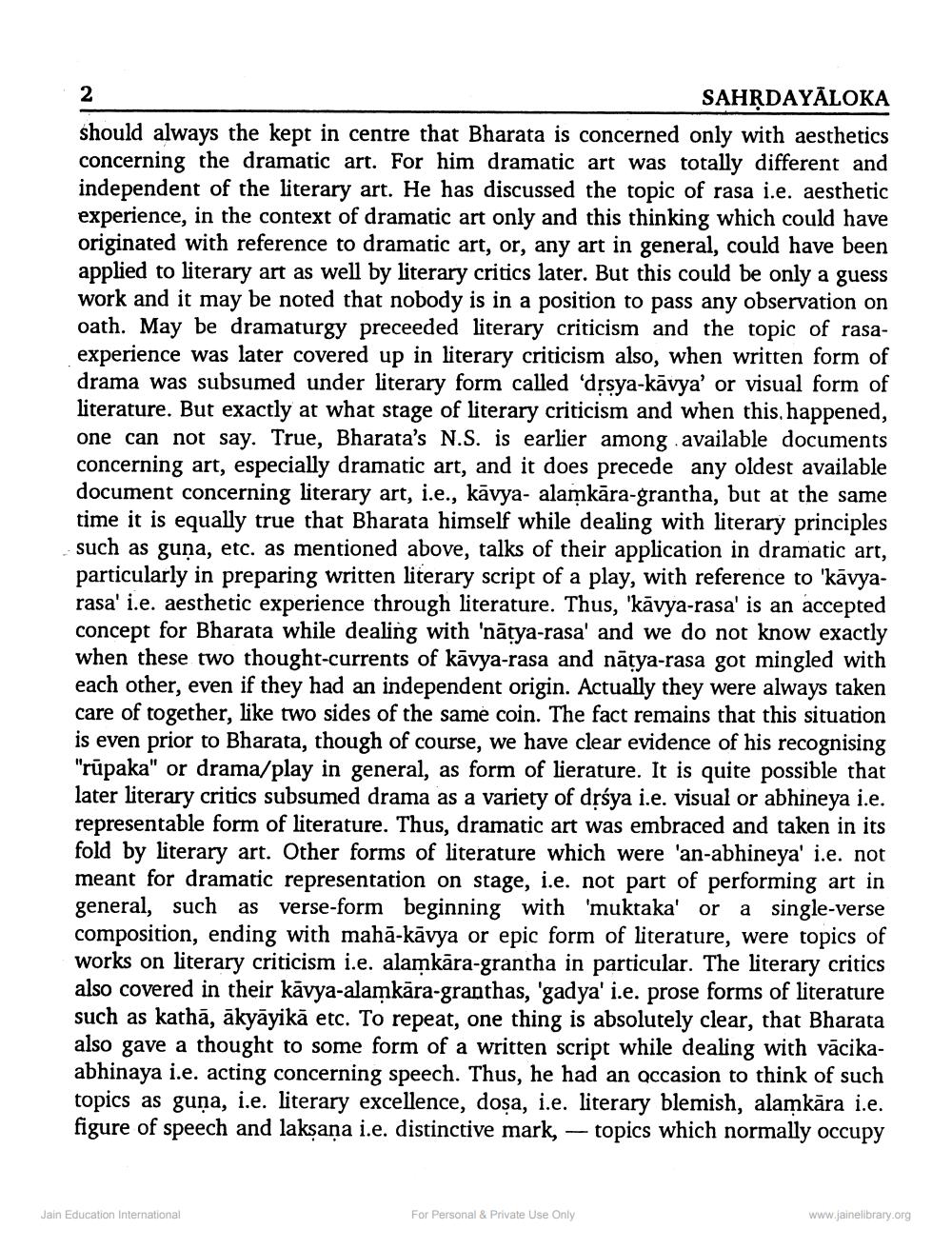________________
SAHRDAYĀLOKA should always the kept in centre that Bharata is concerned only with aesthetics concerning the dramatic art. For him dramatic art was totally different and independent of the literary art. He has discussed the topic of rasa i.e. aesthetic experience, in the context of dramatic art only and this thinking which could have originated with reference to dramatic art, or, any art in general, could have been applied to literary art as well by literary critics later. But this could be only a guess work and it may be noted that nobody is in a position to pass any observation on oath. May be dramaturgy preceeded literary criticism and the topic of rasaexperience was later covered up in literary criticism also, when written form of drama was subsumed under literary form called 'drsya-kāvya' or visual form of literature. But exactly at what stage of literary criticism and when this happened, one can not say. True, Bharata's N.S. is earlier among available documents concerning art, especially dramatic art, and it does precede any oldest available document concerning literary art, i.e., kāvya- alamkāra-grantha, but at the same time it is equally true that Bharata himself while dealing with literary principles such as guna, etc. as mentioned above, talks of their application in dramatic art, particularly in preparing written literary script of a play, with reference to 'kavyarasa' i.e. aesthetic experience through literature. Thus, 'kāvya-rasa' is an accepted concept for Bharata while dealing with 'natya-rasa' and we do not know exactly when these two thought-currents of kāvya-rasa and nätya-rasa got mingled with each other, even if they had an independent origin. Actually they were always taken care of together, like two sides of the same coin. The fact remains that this situation is even prior to Bharata, though of course, we have clear evidence of his recognising "rūpaka" or drama/play in general, as form of lierature. It is quite possible that later literary critics subsumed drama as a variety of drśya i.e. visual or abhineya i.e. representable form of literature. Thus, dramatic art was embraced and taken in its fold by literary art. Other forms of literature which were 'an-abhineya' i.e. not meant for dramatic representation on stage, i.e. not part of performing art in general, such as verse-form beginning with 'muktaka' or a single-verse composition, ending with mahā-kāvya or epic form of literature, were topics of works on literary criticism i.e. alamkāra-grantha in particular. The literary critics also covered in their kāvya-alamkāra-granthas, gadya' i.e. prose forms of literature such as kathā, ākyāyikā etc. To repeat, one thing is absolutely clear, that Bharata also gave a thought to some form of a written script while dealing with vācikaabhinaya i.e. acting concerning speech. Thus, he had an occasion to think of such topics as guna, i.e. literary excellence, dosa, i.e. literary blemish, alamkāra i.e. figure of speech and laksana i.e. distinctive mark, — topics which normally occupy
Jain Education International
For Personal & Private Use Only
www.jainelibrary.org




